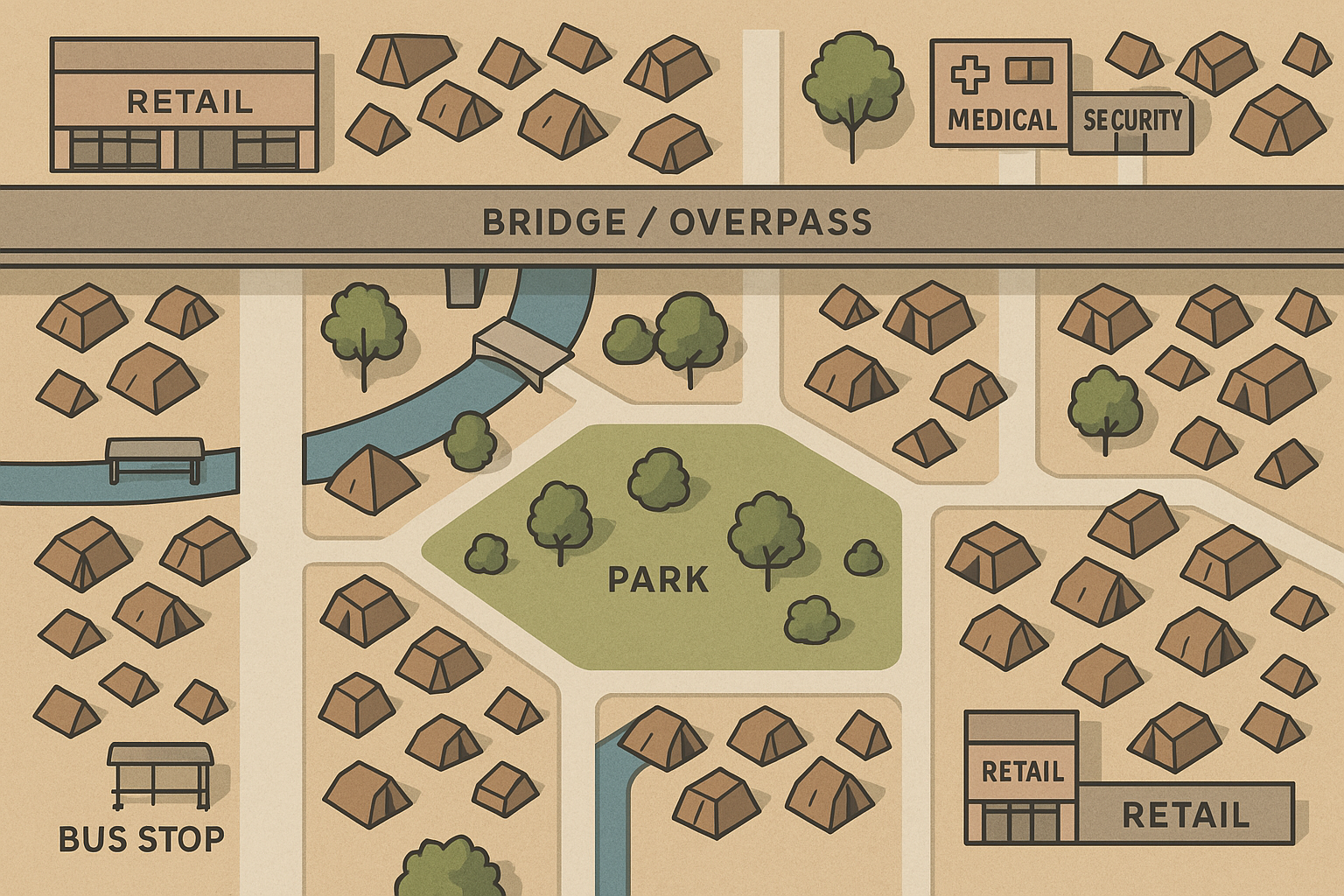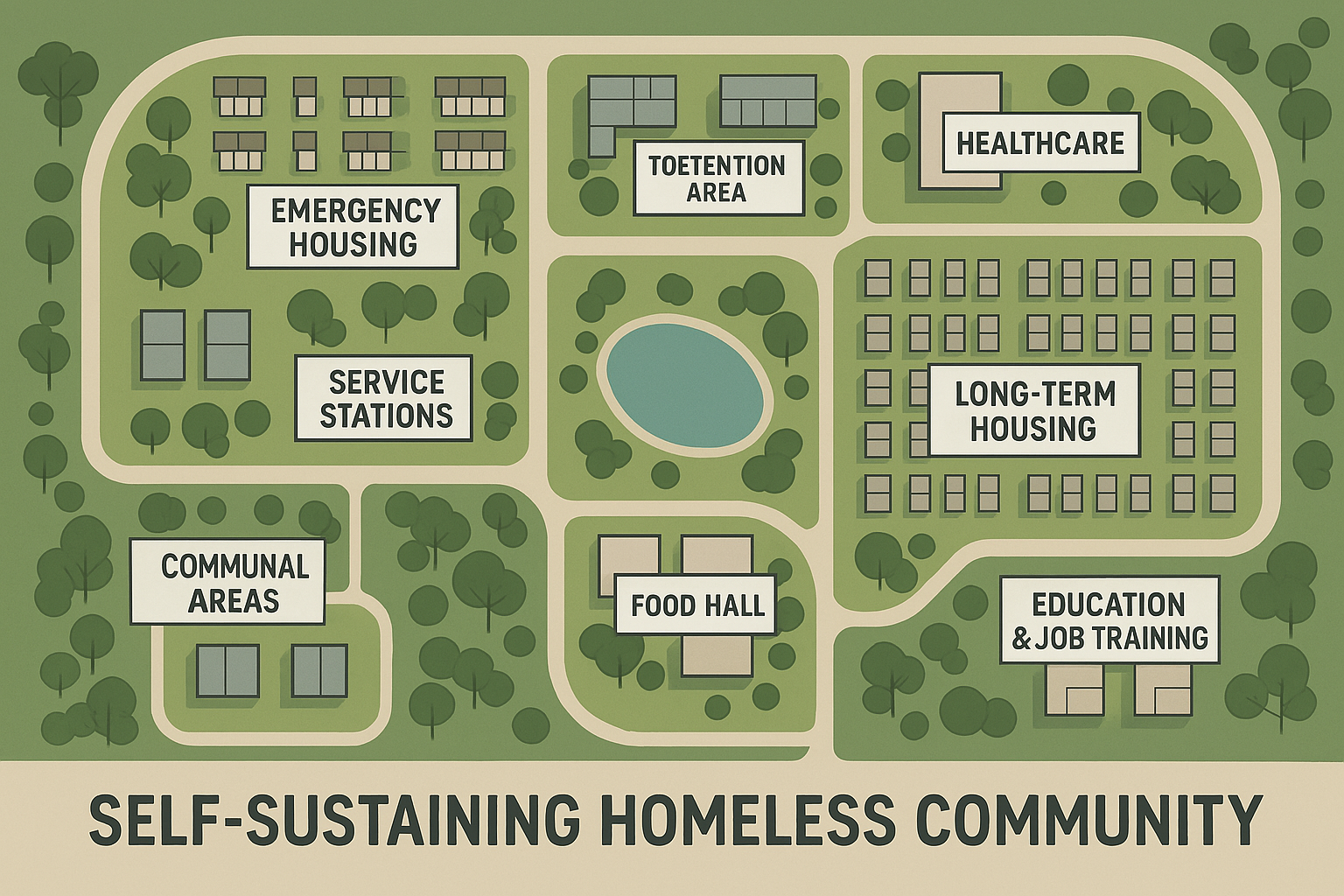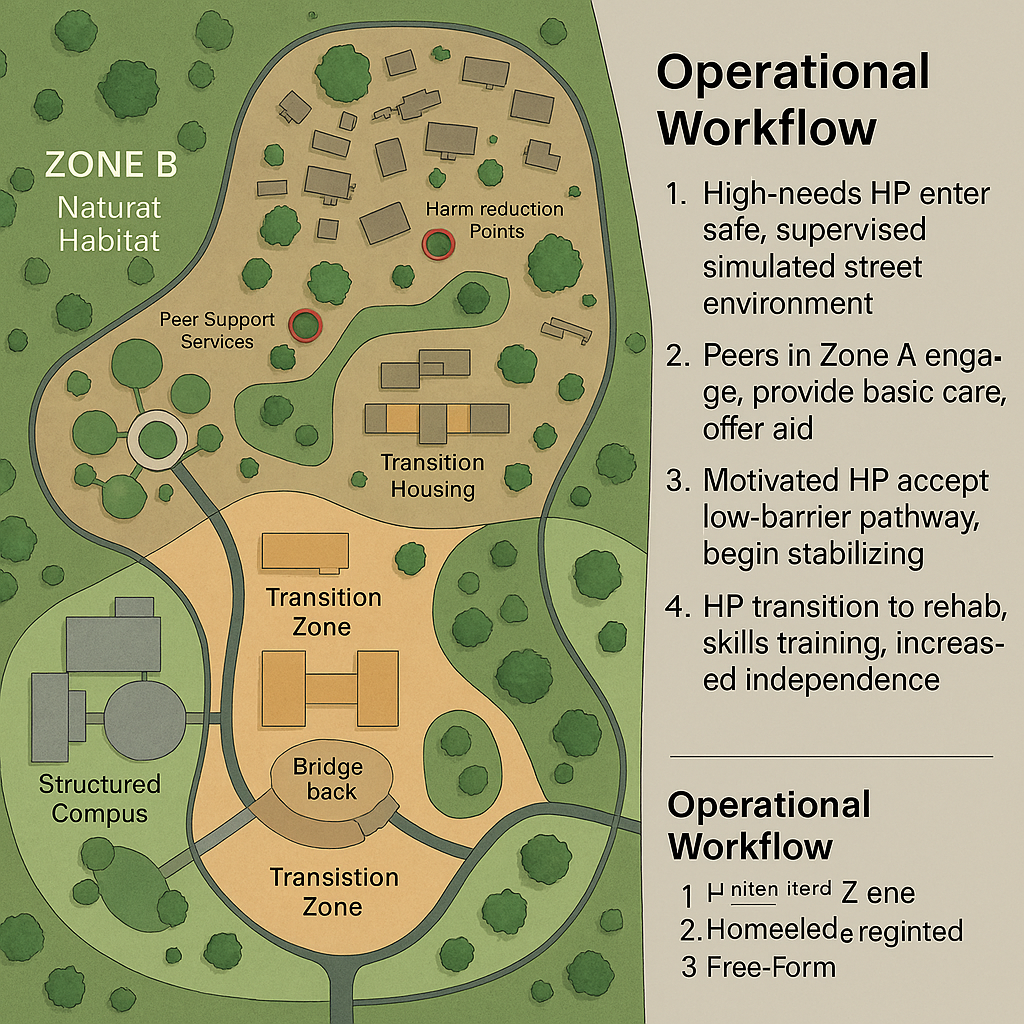LoonieZones
Loonie Land is composed of three zones:
Zone B – Skid Row–Style Open Habitat A protected, street-like environment designed to resemble the areas where many unhoused individuals feel most comfortable. Includes tents, fake storefront facades, benches, and overpasses—recreated in a safe, monitored setting. No pressure. No judgment. Just space to exist and breathe. Basically designed to resemble Skid Row, but with safety, medical patrols, harm-reduction points, and peer oversight. Places where insane unhoused people can sleep, yell, wander, and just be, but without risk of getting hit by cars, hurt by dealers, or caught in street sweeps. |  |
Zone T – Transitional Buffer Zone
This is the bridge between the open layout of Zone B and the structured services in Zone A. Features include safe sleeping pods, sanitation access, hydration points, and minimal staff interaction—offering calm, clean stability to those exploring change.
Zone A – Structured Core Campus The heart of LoonieLand™. Includes dormitories, peer-run kitchens, health clinics, community gardens, and job training stations. It is where transition becomes transformation—without being forced. This is where semi-sane to sane unhoused people live, train, manage, and operate the system. This is where the staff resides, where planning happens, where healing can begin. |  |
| Use Type | % of Total Land | Area (sq ft) | Description |
|---|---|---|---|
| Zone B (Natural Habitat) | 40% | ~348,480 | Open-air, informal structures, shelters, benches, and safe “Skid Row-like” area |
| Zone T (Transition Zone) | 20% | ~174,240 | Pods, hygiene facilities, food kiosks, peer support spaces |
| Zone A (Core Campus) | 25% | ~217,800 | Dorms, structured housing, job training, kitchens, admin |
| Infrastructure & Buffer | 15% | ~130,680 | Paths, utilities, greenery, fences, roads |
🔄 Zone Interconnectivity
We can link Zone A (Structured Core) and Zone B (Natural Habitat) with Transition Zones — soft pathways where people naturally shift between chaos and structure. “Peer Navigators” from Zone A who roam Zone B, offering food, basic medical aid, clean clothes, and non-pushy conversation. A "Bridgeback Café" or neutral chill zone—no rules, no pressure, just coffee and clean space, as a low-barrier bridge from B to A.🛑 Freedom with Boundaries
Zone B should include:Invisible containment: It feels open, but it’s subtly bordered by natural elements (hedges, art walls, trees) and monitored passively.
No forced rehab or relocation—just presence, protection, and peer-based rapport building.
Safe injection/smoking booths, naloxone stations, and public defecation areas managed humanely, not criminally.
🌿 Design That Feels “Real”
Zone B isn’t fake—it reflects where they’re from:Murals and graffiti walls (inviting residents to decorate)
Mock storefronts that serve as drop-in lounges or cooling/warming stations
Broken sidewalk textures (rubberized for safety) so it feels real but is safe
🌀 Behavioral Flow Planning
We can design flow to prevent clustering in unsafe ways:Natural loops (think: Disneyland’s “hub and spoke” system) to keep foot traffic gently circulating
Areas designed for different behaviors: sleeping, yelling, solitude, interaction, etc.

